Whether you’ve already scored an appointment for a vaccine or are waiting for your chance to sign up, you’re probably wondering if you’re going to experience COVID vaccine side effects, what they’ll feel like, and if they will be bad.
While it’s impossible to know ahead of time if you’ll have vaccine side effects, rest assured they’re totally normal, as well as typically mild and short-lived, lasting 12-48 hours (90% of side effects fall into this category).
In a weird way, having side effects is a good thing. Some, such as fever, swollen lymph nodes, and chills, are signs that the vaccine has triggered your body to build protection against COVID-19. “The bigger your body’s immune response, the more likely you’re going to feel like you have a flu-like illness,” Kathleen Mullane, DO, PharmD, professor of medicine and director of infectious disease clinical trials at the University of Chicago, tells Health.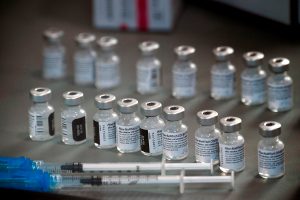
Currently, three vaccines have been authorized by the FDA: the Pfizer vaccine, the Moderna vaccine (both are mRNA vaccines), and the Johnson & Johnson vaccine (a viral vector vaccine). Right now, only the Pfizer and Moderna vaccines are available; the FDA and CDC paused the Johnson & Johnson vaccine so they could look into a possible link between it and blood clots. Before it was put on hold, however, the Johnson & Johnson vaccine appeared to result in milder side effects among all three vaccines according to people who received it, William A Petri, MD, PhD, chief of the division of infectious diseases and international health at UVA Health in Charlottesville, Virginia, tells Health. That doesn’t mean that you should avoid one particular vaccine over another. All are safe and effective, and you can’t know beforehand if you’ll experience any side effects or none at all.
More side effects info to know: If you’re getting the Pfizer or Moderna vaccines, which both require two separate doses, the second shot tends to produce more bothersome (yet normal) side effects. “The second dose helps create a more sustained antibody response,” says Dr. Petri.
Also, based on the results of clinical trials of all three vaccines, older adults tend to have less intense side effects compared to younger adults—which may be due to a variety of factors that experts haven’t quite sussed out yet. It could be that an older adult’s immune system doesn’t have as strong a response, or that an older person’s perception of pain is different, says Dr. Mullane. (Older adults are defined as those who are 55-plus or 65-plus, depending on the specific vaccine.)
With all this in mind, here are 14 COVID vaccine side effects reported in clinical trials and/or listed by the CDC as known side effects after the initial month of public vaccination efforts. This information is evolving; as more people get vaccinated, the larger pool of data will likely uncover new info and trends concerning side effects. Based on what we know so far, here’s what you might end up dealing with after you get the jab.
Pain at the injection site
Expect to have a little localized arm pain or tenderness at the site of injection, says Dr. Mullane. You may also notice some redness or swelling where the needle went into your skin, but it will dissipate. About 70% to 80% of people feel arm pain the day of the shot, per CDC data. If it bothers you, you can soothe the area with a cool washcloth, the CDC advises.
COVID arm
This side effect is different from upper arm tenderness post-injection. “[COVID arm] happens about five to seven days after the vaccine when you develop a red, itchy arm,” says Dr. Mullane. The red lesion that forms at the injection site can be anywhere from a 1-inch to 5-inch square, she says. “We’re not sure what this reaction is, but we think it may be that the vaccine moved outside the muscle and into the soft tissue,” she says. Another theory is that COVID arm is an allergic skin reaction. It’s not common, only occurring in a small percentage of people, Dr. Mullane adds.
If you develop COVID arm, you can take an antihistamine or apply a topical cortisone to quell itching. Once it goes away and it’s time for your second dose, consider switching arms, the CDC advises.
Swollen lymph nodes
You might notice that your lymph nodes swell when you get sick. The same can happen after the vaccine, and it’s more frequent after the Moderna shot, occurring in about one in 10 people, says Dr. Petri. This swelling will happen in the lymph nodes in your underarm area near the injection site.
What’s the cause of the swelling? Your lymph nodes are going into overdrive producing infection-fighting antibodies, making them increase in size, Dr. Petri explains. It sounds scary, but i’s nothing to worry about.
Headache
After either the first or second dose of the Pfizer or Moderna vaccines, 30% of recipients developed a headache, says the CDC—a number Dr. Mullane considers relatively common. (In clinical trials, that number ranged from 35% to 63%, depending on the vaccine and specific dose.) The FDA reported on February 26 that 39% of people who received the Johnson & Johnson vaccine ended up with headache. If this side effect strikes you, you can take an over-the-counter NSAID painkiller like ibuprofen, or try an OTC painkiller with acetaminophen (Tylenol) for relief.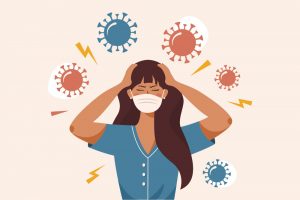
Fatigue
Fatigue can happen after either dose of the Pfizer or Moderna vaccines. But in clinical trials, the second vaccine tended to leave more people wiped out. About 39% of those ages 18 to 64 reported fatigue after their first dose of Moderna, and 68% reported it after their second. In the Pfizer trials, fatigue was reported in 47% of people after the first shot and 59% after the second in those under age 55. As for the Johnson & Johnson shot, 38% of recipients said they experienced fatigue. Listening to your body by taking it easy and resting is the best course of action.
Fever and/or chills
Again, this side effect is the result of your immune system being activated, and though it can make you feel crappy, it’s normal. Early reports from the public indicate that fever or chills happen about 11% of the time after wither the first or second Pfizer or Moderna vaccine injections. Fever developed in 9% of the Johnson & Johnson injections, per the FDA. Waiting it out or doing what you’d normally do if you felt a fever and chills coming on, such as drinking plenty of fluids and making yourself more comfortable by dressing lightly, are the best courses of action. You can also talk to your doctor about taking an OTC fever-reducer like aspirin or acetaminophen, per the CDC.
Nausea
About 20% of people in the clinical trials for the Moderna vaccine reported nausea after receiving their second dose, double the rate after dose number one. And 14% of Johnson & Johnson vaccine recipients also reported nausea. (Nausea was not a reaction reported in the Pfizer trials.) That vomity feeling isn’t fun, but know that it won’t last. To ease it, consider resting, eating light or bland foods if you’re hungry, and talking to your doctor about an OTC anti-nausea remedy.
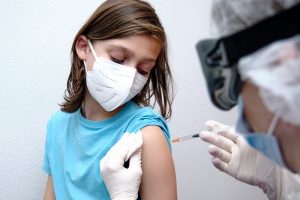 Muscle pain
Muscle pain
COVID itself can leave people with muscle aches, and so does the COVID vaccine. About 20% to 40% of people in the Pfizer clinical trials and 20% to 60% in the Moderna clinical trials were saddled with muscle aches and pains post-vaccine. Thirty-three percent of those who took the Johnson & Johnson vaccine said they experienced muscle pain. It’s another aspect of the body’s immune response, and some people will feel these aches lightly while others will be more bothersome.
Dizziness
According to the CDC, among people who reported side effects, about 17% indicated that they felt dizzy following their COVID shot. A CNBC article from February 19 noted that dizziness was the third most common side effect people experienced after getting either the Moderna or Pfizer vaccine during the first month the vaccines were available, per a CDC report. (The Johnson & Johnson vaccine was not available at that time.)
Anaphylaxis
Anaphylaxis is a potentially life-threatening allergic reaction that’s an exceedingly rare COVID vaccine side effect. There have been just 4.7 known cases per million doses of the Pfizer vaccine and 2.5 cases per million of Moderna.
The dangerous reaction usually happens within 30 minutes of vaccination. Symptoms of anaphylaxis include trouble breathing, hives or swelling, tightness of the throat, dizziness, and fainting, according to the American College of Allergy, Asthma & Immunology. Anyone experiencing these symptoms requires emergency medical care and/or administration of an EpiPen. A person who has anaphylaxis after their first shot should not get a second dose, warns the CDC.
What to do if your side effects don’t go away or get worse
Side effects usually strike 12 to 24 hours following the shot, says Dr. Mullane. They typically last about 12 hours but up to two days in some people, she adds. If you’ve waited it out or your side effects don’t go away after a few days–or if they’re worrying you-—reach out to your doctor, the CDC advises. If it’s redness or tenderness at the injection site that you’re worried about and it hasn’t disappeared or has become worse after 24 hours, get in touch with your doctor. And if you show any of the signs of anaphylaxis, that’s a medical emergency—call 911, warns the CDC.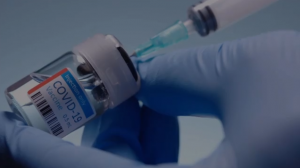
Now that you know all the ways side effects could affect you, you have the opportunity to plan ahead as best as you can. Take the day off work, if possible. Catch up on your Netflix queue. Don’t plan something requiring lots of energy or focus for the day after your shot. Oh, and don’t take a painkiller, like Advil or Tylenol, before your shot to try to prevent side effects. The CDC advises against this. “We don’t think it would impair your immune response, but we don’t want to take any chances,” William Schaffner, MD, an infectious disease specialist and professor at the Vanderbilt University School of Medicine, previously told Health.
And if side effects do happen, do your part to contribute to science by reporting them to the Vaccine Adverse Event Reporting System (VAERS).
The information in this story is accurate as of press time. However, as the situation surrounding COVID-19 continues to evolve, it’s possible that some data have changed since publication. While Health is trying to keep our stories as up-to-date as possible, we also encourage readers to stay informed on news and recommendations for their own communities by using the CDC, WHO, and their local public health department as resources.

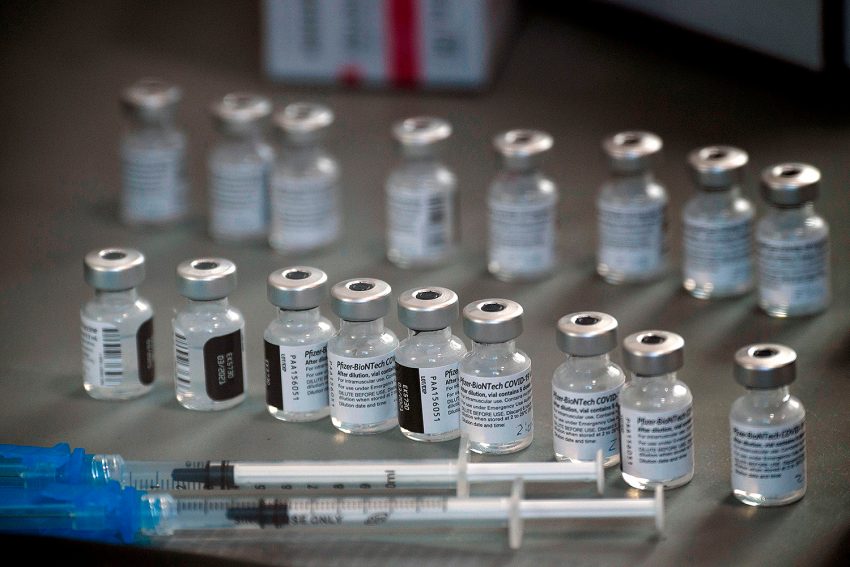








Leave a Reply